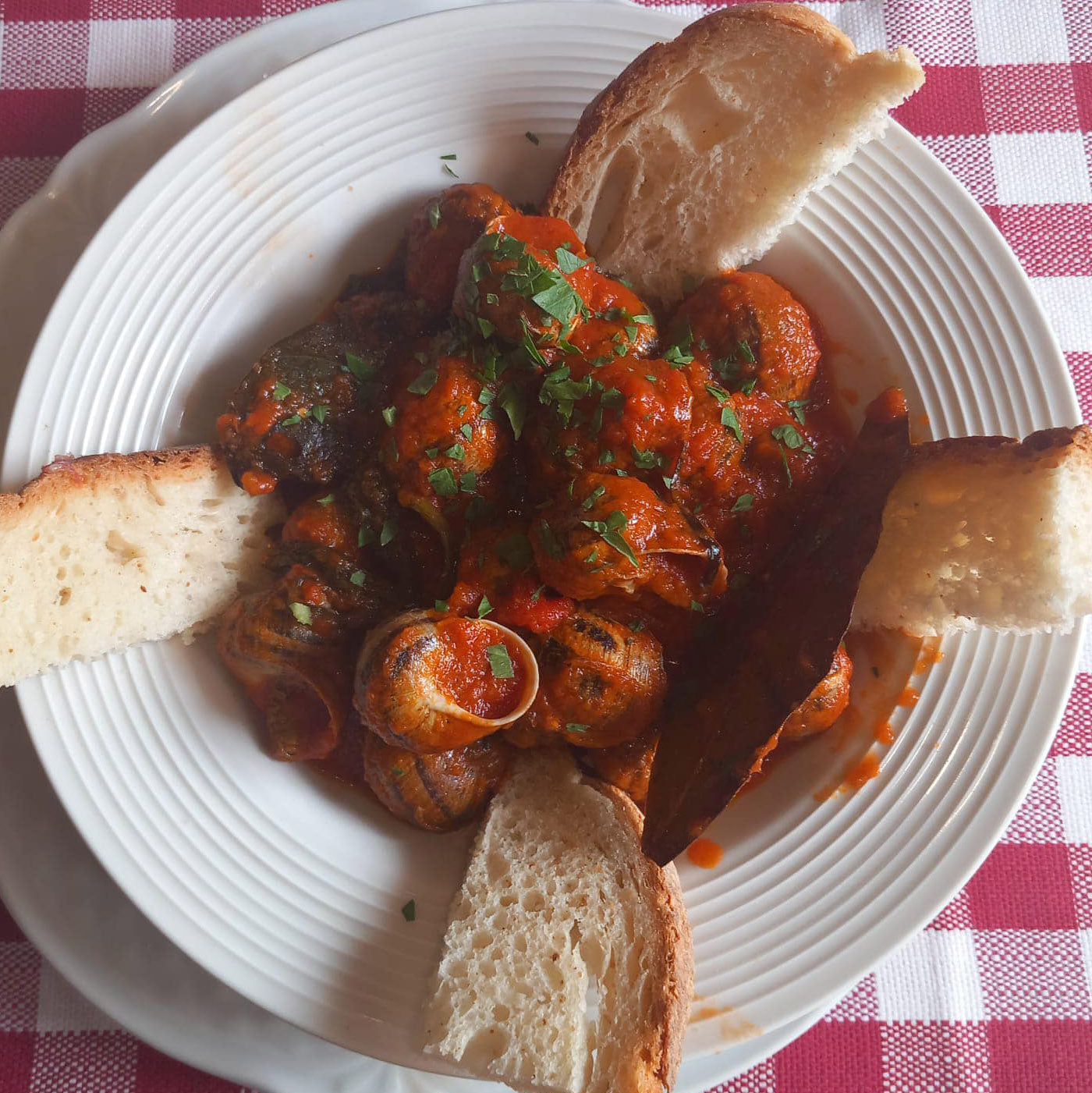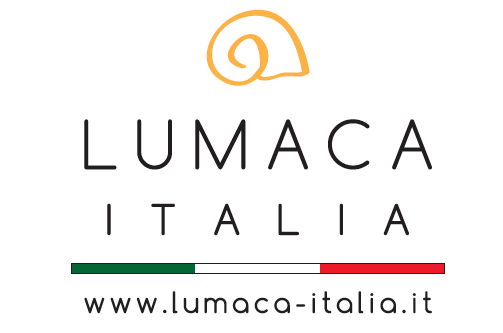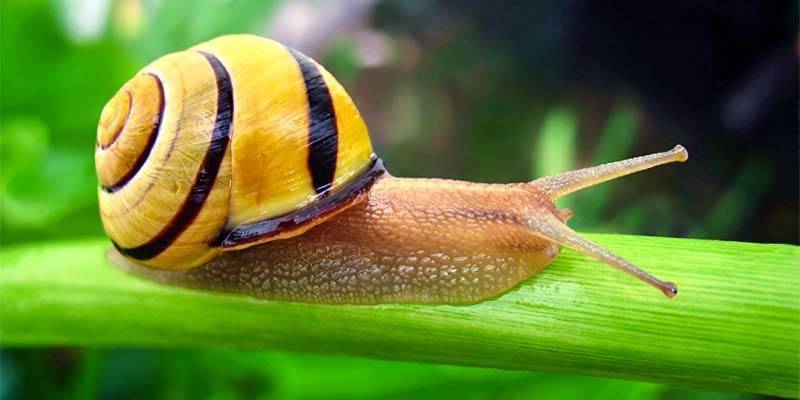SNAIL (gr. κοχλίας; lat. cochlea ; fr. escargot ; sp. caracol ; ger. Schnecke ; ingl. snail ). - The Snail genus ( Helix ) includes the best-known and most numerous species (around 4000) of terrestrial pulmonate gastropod molluscs. They are equipped with a large helical shell, mostly right-handed, into which the animal retreats when it is at rest, when it wants to defend itself from enemies and when it is hibernating. The range of snails extends to all continents, from tropical countries to the polar limits. The shapes are very varied: from globular, orbicular and planorbic shell species to trochiform and turricolate ones. The dimensions range from one mm. several cm. in diameter.
Snails are insufficient and oviparous hermaphrodites. They mate during the good season and produce a certain number of spheroidal eggs (from 60 to 80), which they sometimes bury in holes a few decimeters deep ( Helix Aperta Born.), gathering them in irregular piles. These eggs, surrounded by a white, membranous shell, impregnated with calcareous salts, are then abandoned and produce, 20-30 days after deposition, snails already equipped with a rudimentary spiral shell. 
There are long and frequent interruptions in the vital activity of snails with the hibernation phases (winter, summer), mainly due to cold, heat, or lack of food. The resistance to fasting of some species is notable (e.g. Helix vermiculata Müll.) which can remain fasting for several years (over 7); as well as the tolerance for low temperatures of certain alpine forms that live among the ice of the Himālaya and the Alps ( H. glacialis up to 2500 msm; H. alpina up to 1800 msm) and the habit of withstanding high temperatures by the species that live in desert areas. On average, the normal life of snails lasts 2 or 3 years.
For adhesive purposes and to create conditions more favorable to sleep, the mantle of the snails secretes, where necessary, abundant mucus which, drying at the entrance of the shell, forms a membranous production, called pseudoepiphragma . During hibernation a similar, thicker formation impregnated with calcareous salts, called epiphragma or false operculum , closes the opening of the shell, acting as a regulator in gaseous exchanges with the outside. An opaque area, often triangular, can be seen both in the pseudepiphragma and in the epiphragma (not to be confused with the operculum of other genera).  corresponding to the pneumatostome, and starting from the same area a transverse suture that heads towards the columellar axis. In some cases numerous epiphragmata (even 5-6) are produced in the hollow of the shell helix.
corresponding to the pneumatostome, and starting from the same area a transverse suture that heads towards the columellar axis. In some cases numerous epiphragmata (even 5-6) are produced in the hollow of the shell helix.
The Italian malacological fauna is rich in numerous Helix species (about 250), related, based on the anatomical constitution and shape of the shell, to different subgenera.
Fossil forms of Helix appear in the Early Eocene.
For the anatomy of the snail see gastropods ; pneumoniae .
Snails are harmful as they can spread infectious diseases by carrying pathogenic germs. They are considered among the animals harmful to agriculture because they attack seedbeds, nurseries, vegetable gardens and orchards. The natural enemies of snails (moles, hedgehogs, mice, thrushes, blackbirds, toads, beetles, etc.) are not always able to limit their development, so their systematic destruction is often required.
In the past the use of snails was notable not only for the food value attributed to them but for the medical and pharmaceutical importance that was recognized in them. Snail broths and pectoral pastes, considered as emollients, were used in bronchial and gastrointestinal diseases.
The ancient Romans used snails especially in funeral meals, so it is not uncommon to find piles of Helix shells abandoned by relatives and friends during funeral feasts on the tombs of Pompeii cemeteries. The snails that the Romans brought from distant countries (Sicily, the Balearic Islands, Illyria) were bred in special parks ( cochlearia or cochlearum vivaria ). During the Middle Ages and in recent times, snails were still in vogue. There are reports of special breeding carried out in Germany, Switzerland, Austria, Spain and France.
Bibl .: Rossmaessler, Iconographie der Land- und Süsswasser-Mollusken , Dresden and Leipzig 1835-1854; Albers-Martens, Die Heliceen , Leipzig 1860; C. Pfeiffer, Monographia Heliceorum vivium , Leipzig 1874-1878; P. Dorello, The sexual life of snails , Rome 1924; C. Piersanti, Molluscs and shells , Milan 1926; H. Simroth, Pulmonata , in HG Bronn, Klassen und Ordnungen des Tier-Reichs , III, ii , Leipzig 1925.


